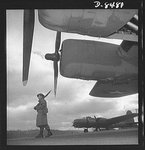PROTECTING OUR SHORES - BUILDING THE FLEET (no. 11)
Mar 23, 2011
Protecting Our Shores/Building The Fleet
Protecting the Salish Sea The strategy through World War II for protecting the Salish Sea from attack has progressed through several fundamental approaches, each leaving their lasting mark upon the landscape. Prior to the Civil War defenses focus on repelling wooden sailing vessels. Still in early exploration and territorial stages the region did not develop the massive vertical walled fortifications of the East Coast. During and through the Civil War the threat of attack to the Salish Sea was not foreseen as likelihood. During the 1880s as the nation recovered from the Civil War and trade and commerce expanded the nation re-evaluated the system of coastal fortifications. Since the 1860s iron hulled steam powered vessels began replacing wooden sailing ships. Ships began using mounted steel breach cannons with rifling that could easily penetrate the vertical earth and stone fortifications. Over the next twenty years the nation embarked upon implementation of a modernization program known as the Endicott program. Legacy of this program in the Salish Sea are Forts Flagler, Worden, Casey, and Ward. Completed by 1915 the new system represented the state of the art in coastal defense using recessed modern weaponry that blended in with the landscape and searchlights to defend against vessels attacking at night.[1] The sense of security and strength imparted by this expensive and extensive system ushered in a growth in US sea power and imperialism. World War I ushered in advanced ship weaponry and the Navy’s use of airplanes, which relegated the Endicott system to near defenseless. The growth of shipyards and repair facilities began in WWI and reached maturity in WWII. During WWII the strategic weapons system development capacity and the ability to not only quickly repair battleships but to concurrently refit hem with the latest in armament and technology and return them to battle contributed to the nation’s naval power. The extensive training facilities developed during WWII contributed to more and more experienced sailors reaching the front lines and having the capacity to use the advanced weaponry. Regional Naval Aviation Growth Naval aviation emerged during World War I and quickly grew to a major force along the Salish Sea during WWII. The Thirteenth Naval District operated a massive regional network of naval air stations and auxiliary air stations. These were essential in providing training for new pilots prior to deployment and for continued training of experienced aviators. The system of facilities provided an aerial umbrella for the critical shipyards located throughout the region and a logistical arm for transporting troops and supplies north to Alaska. In 1911 Elliott Bay was buzzed by Eugene Ely and Hugh Robinson in their Curtiss airplanes. During the 1920s and 1930s the Navy engaged Boeing to develop and build several small fighters capable of launching from the Navy’s first aircraft carriers. The Army and Navy operated a joint yard at what would become Naval Air Station Seattle.
World War I ushered in advanced ship weaponry and the Navy’s use of airplanes, which relegated the Endicott system to near defenseless. The growth of shipyards and repair facilities began in WWI and reached maturity in WWII. During WWII the strategic weapons system development capacity and the ability to not only quickly repair battleships but to concurrently refit hem with the latest in armament and technology and return them to battle contributed to the nation’s naval power. The extensive training facilities developed during WWII contributed to more and more experienced sailors reaching the front lines and having the capacity to use the advanced weaponry. Regional Naval Aviation Growth Naval aviation emerged during World War I and quickly grew to a major force along the Salish Sea during WWII. The Thirteenth Naval District operated a massive regional network of naval air stations and auxiliary air stations. These were essential in providing training for new pilots prior to deployment and for continued training of experienced aviators. The system of facilities provided an aerial umbrella for the critical shipyards located throughout the region and a logistical arm for transporting troops and supplies north to Alaska. In 1911 Elliott Bay was buzzed by Eugene Ely and Hugh Robinson in their Curtiss airplanes. During the 1920s and 1930s the Navy engaged Boeing to develop and build several small fighters capable of launching from the Navy’s first aircraft carriers. The Army and Navy operated a joint yard at what would become Naval Air Station Seattle. 
[1] (Hansen 1975)




